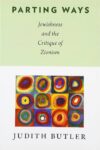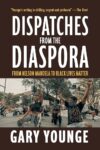 In the cave of Hira in Makkah on the night known to Muslims as the Night of Power, the first revelation is believed to have come to the Prophet Muhammad Sal-Allahu-‘alayi-wa-sallam [1] via the Angel Gabriel, the beginning of a series of revelations over 23 years. Those revelations are now bound together in the book we call the Qur’an.
In the cave of Hira in Makkah on the night known to Muslims as the Night of Power, the first revelation is believed to have come to the Prophet Muhammad Sal-Allahu-‘alayi-wa-sallam [1] via the Angel Gabriel, the beginning of a series of revelations over 23 years. Those revelations are now bound together in the book we call the Qur’an.
At the time the Prophet Muhammad’s death in 632 A.D., there were already 22 people who had memorized the entire Qur’an, which comprises over 6000 verses in Arabic. A person who has committed the entire Qur’an to memory is known as a Hafiz (the plural being Huffaaz), and today there are millions of Huffaaz around the world. Why spend years learning the entire book, in its original language, a language often not understood by the reader? Apart from reading the original text in its written form, it is believed that the rewards for committing the entire text to memory include entry into paradise, along with the intercession for 10 family members to also, by God’s mercy, be allowed to enter the gardens of heaven.
After the death of the Prophet Muhammad and the subsequent wars, many Huffaaz were killed, and the need was recognized for a written version of the Qur’an to be compiled. The version that was compiled is believed to be unchanged from the original revelation and continues to be read, recited, and memorized by Muslims around the world.
With over three billion prints sold, the Holy Qur’an is the bestselling book of all time, beating the King James’ Bible (2.5 billion copies) and Quotations from Chairman Mao Tse-tung (over 800 million) by a decent margin. This is so even though Christian religious publishing houses are bigger, with better marketing.
As a Muslim living in South Africa, I can only wonder at how marginalized Muslims living in the West, the so-called developed world, must feel as Islamophobia continues to rise, and attacks on Muslims (or people who just look like Muslims) increase. My parents, brought up in a completely different part of the world, faced different challenges related to racial segregation in a country that only embraced democracy 22 years ago. But with the flattening of the world, globalization’s rise, and the fight of my forefathers fought and (mostly) won, the barrage of ill-feeling toward people of my religion is almost impossible for me to ignore, even though I don’t feel its direct effects. I’m a hipster Hijabi, I follow trends, and I grew up reading Harry Potter and eating Häagen-Dazs. But I also adhere to a faith that has come under increasing scrutiny.
Muslims around the world do not all practice the religion in exactly the same way. But the Holy Qur’an is the scripture that binds us, laying the foundation for our faith. It is ancient and beautiful; the sound of its recitation by a skilled reciter often reduces one to tears. One need not even understand the words to feel its effects. I attended some lectures a few years ago, and the professor professed to not always feeling as he thought he ought to when it came to matters of religion. But, he admitted, when he heard the recitation of the Qur’an, he felt a trembling awe.
This ode to the Holy Qur’an, this overture to the book that has captured my heart, is not meant to be an explosive discussion on world politics and global sentiment. This is just an introduction for the inquisitive, for the minds who wonder, the curious seekers, about a book that continues to affect the lives of millions of people around the world.
What will you find if you open the Qur’an and begin to read? Is there something to be gained for a newcomer, a visitor seeking to catch a glimpse behind the veil of this revered scripture? How do you even begin to walk amongst the old Arabic text? With an introduction and an open mind, you may feel impelled to read this unusual book, or at least feel less at sea when the Qur’an is mentioned in random conversation. At the very least, I hope you take a minute to find a clip on YouTube and listen to a bit of Qur’anic recitation.
Translation or interpretation?
The lyrical, fluid nature of the Qur’an’s original Arabic makes memorization of the entire text manageable, but translation and interpretation are a different matter. There are many translations—you can look at seven parallel translations of the Qur’an on the Corpus Qur’an website—but in order to interpret the Qur’an, it is believed that you must be skilled in 15 branches of Islamic knowledge, including Arabic and its philology, syntax and grammar, knowledge of semantics and figures of speech, knowledge of the fundamentals of the Islamic faith, Islamic jurisprudence, and Hadith (sayings of the Prophet Muhammad). To be properly qualified, you basically have to be a senior Islamic scholar, and even then, it is considered a mistake to submit a personal opinion on the interpretation of the Qur’an. That doesn’t stop people from using various portions of the text to suit their own needs.
Apart from the fact that there are many different versions of what are called “translations” of the Qur’an, some Muslim scholars hold that you can only ever interpret the Qur’an and that a perfect translation is impossible. Thus, Muslims around the world read and learn the Qur’an in its original Arabic, consulting translations or interpretations for a guide as to what the text means, but not as a substitute for the original.
Some traditions say that every verse in the Qur’an has 60,000 interpretations. G. Willow Wilson, in her intriguing novel Alif the Unseen, writes that “each word in the Qur’an has seven thousand layers of meaning, each of which, though some might seem contrary or unfathomable to us, exist equally at all times without cosmological contradiction.”
So what is a layperson to do? You might begin with Lesley Hazleton’s TED talk, “Reading the Koran.” Hazleton explains that many non-Muslims reading the Qur’an have given up because they “imagine the Qur’an can be read as we usually read a book.” She argues that it is so easy to misquote the Qur’an because so few actually read it.
Recitation
The word “Qur’an” means “recitation,” and the first revealed words of the Qur’an are “recite, in the name of your Lord.” The Qur’an is meant to be recited aloud for its full beauty to be felt, and young Muslims can often recite verses of the Qur’an before they can read. The oral quality of the Qur’an is not to be underestimated, and a whole sub-branch of scholars have emerged who specialize in Qur’anic recitation. Someone skilled in the recitation of the Qur’an is known as a Qari, and famous Qaris are sought out to recite the Qur’an on auspicious occasions.
Technology has helped to spread the sound of famous reciters of the Qur’an, with digital versions of the Qur’an being produced, allowing for recitation to be heard along with the text. There is also a version of the Qur’an accompanied by a reader pen that allows the user to choose between different reciters and different translations. One of the famous reciters often available on these digital platforms is Abdur-Rahman Al-Sudais, the Imam of the main mosque in Makkah. Countless clips can also be found on YouTube of famous Qaris reciting verses from the Qur’an in melodious tones.
What will you find when you read the Qur’an?
The Qur’an contains a range of topics from personal religious injunctions, to advice on marriage and family, to guidelines on business and contracts. Some passages address specific issues—for example, the prohibition of interest in commerce and the need for written contracts—while other portions are narrative. However, the narration is not chronological, and some topics and stories appear in various different places. The injunctions to establish prayer and pay Zakat (a compulsory charity that Muslims of sufficient means must pay annually) are repeated a number of times. Descriptions of heaven and hell appear. But, as Hazleton says, the notion that heaven is the provision of 72 virgins is mistaken. Rather, the Qur’an’s version of paradise is more akin to gardens watered by running streams.
In writing her biography on the Prophet Muhammad, Hazleton studied four translations, along with the transliteration and the original Arabic, knowing all the while that she would be only an informed tourist in the Qur’an, “an agnostic Jew reading someone else’s holy book.” Her three-month study of the Qur’an led her to the conclusion that the Qur’an needs to be felt rather than read and analyzed. The rhythmic cadence of the language and the fact that a translation is a poor substitute (for example, the opening verse of the Qur’an, which comprises 29 words in Arabic, takes anywhere from 65 to 72 words in translation) led to her realization that the Qur’an “is really the Qur’an only in Arabic.” But while the English version seems to be a “shadow” of the original Arabic, all is not lost in translation. Much can be learned about the Islamic way of life by really looking at the text.
As for the content, around one third of the text reprises the stories of Biblical figures. 25 Prophets are mentioned in the Qur’an, many with Biblical counterparts, the most frequently mentioned one being Moses, with Abraham and Jesus also near the top of the list. The name of the Prophet Muhammad is mentioned only four times. An entire chapter recounts the story of Joseph. Mary also has a chapter devoted to her story.
The Qur’an contains 114 surahs (chapters or stories), with 86 having been revealed in Makkah and 28 in Medina, the place to which the Prophet Muhammad and his companions fled due to persecution in Makkah. The earlier Makkan surahs deal with spiritual issues and internal recognition of the monotheistic nature of the religion, while the later, longer Medinan surahs deal more with establishing the socioeconomic framework for the young Muslim society. The fundamentals of the religion having been established, the Medina period dealt with broader societal issues.
What about the violence?
As for the parts on “killing unbelievers,” Hazleton says that a true study shows that this was allowed in a specific context, and that the revelation came down at the time when killing in the holy land of Makkah was prohibited. The allowance is “hedged with qualifiers” such as the fact that it is allowed only if the enemy attacks first, and only if no pact is in place, and only after a grace period is over, and even then, forgiveness is supreme and, therefore, it’s “better if you don’t.” Hazleton’s biggest surprise was how flexible the Qur’an is, in minds that are not inflexible.
The historian Philip Jenkins compared the “brutality quotient” of the Qur’an and the Bible and found that the Qur’an was “far less bloody and less violent” than the Bible. Violence in the Qur’an is spoken about mainly in relation to defenses against attacks. Jenkins says that the laws of war laid down in the Qur’an are “reasonably humane” compared to what he compares as a type of warfare laid down in the Bible that is akin to genocide. Even though the Bible is violent, Jenkins says that religions, as they expand, “go through a process of forgetting of the original violence…a process of holy amnesia.” Violence is made symbolic, and “until recently, Islam had the same sort of holy amnesia, and many Muslims interpreted jihad, for example, as an internal struggle, not physical warfare.”
There is actually a code of ethics and strict rules relating to jihad, including that innocents, women, children, and the aged should not be hurt, enemy soldiers should be treated fairly, property should not be damaged, and wells and trees should not be destroyed.
This leads to a question about what ISIS is really up to, since they have reportedly killed Muslims and non-Muslims alike, destroyed historic sites, and flouted many of the other rules of jihad.
Science, numbers, and the Qur’an
Religious scholars have analyzed certain words and word pairs and have come up with a number of interesting scientific and mathematical correlations between the words of the Qur’an and nature.
For example, the word “land” appears 13 times, whereas “sea” appears 32 times, the total being 45. The ratio of land to sea on Earth is 13/45 (29%). Also, it is said that “the words ‘man’ and ‘woman’ both appear 23 times in the Qur’an. The 23rd chromosome is the main element that determines an individual’s gender.”
These and other numerical features have fascinated scholars of the Qur’an and are seen as proof of the book’s divine origins. Studies into ontology and semantic relations are ongoing.
The market and the cost
A hardcover version of the Qur’an in English translation costs around $20 on Amazon, and you can get a copy for under $10 dollars on eBay, although some versions are sold for more than $70, depending on the size and design. My personal copy was given to me by my great-grandmother, who bought it for 30 South African Rands (under $3), but this was around 15 years ago.
You can also read the Qur’an for free online, and some organizations will send you a free copy. There are also a number of apps that allow you to read the text or listen to its recitation. The Saudi kingdom gives away 30 million copies of the Qur’an per year.
While the Arabic text in its original form is, of course, preferred, a recent English translation, the Study Qur’an, aims to be “an accurate, unbiased translation understandable to English-speaking Muslims, scholars and general readers” as well as to provide a rebuttal to terrorists. The authors claim that in the aftermath of 9/11, when prints of the Qur’an were rushed to press, few of the 25 or so English translations available were accessible. However, the authors also note that their version may not be universally accepted by Muslims, who may find the text “too Sufi… philosophical and open to other traditions.” At $60, the Study Qur’an might seem prohibitively expensive, but the publishers have already printed 13,000 copies in addition to their first run of 10,000 due to strong presale figures.
The complexities of so-called terrorism cannot be understood by reading the Qur’an in a vacuum, and the socio-political and historical features of a specific region and group of people are important factors explaining the global situation today. Someone looking to learn more about Islam may want to start with a more introductory text and not jump straight into the depths of the Qur’an. But the reality of recent history has spurred the market for versions of the Qur’an that are accessible to non-Muslims, and interest in the Qur’an by non-Muslims will likely continue.
Beyond the veil
The Qur’an has been written about by scholars, worshippers and poets, including Jalal Al-Din Rumi. Rumi, the mystic Sufi poet who is arguably the most popular poet in America, wrote about the Qur’an, but presumably never thought his work equal to the magnificence of the Qur’an. The Qur’an itself lays down a challenge to writers to produce a work like it, or even ten chapters, or even one chapter, but the challenge has never been successfully attempted.
The Qur’an has fascinated writers for centuries, its inimitable divine qualities drawing readers in. Maybe the nature of the text requires the reader to approach it with an inquiring mind and not with an analytical bent. Rumi’s advice from his poem on the Qur’an (translated by William C. Chittick) is that:
if you stop pulling at its veil
and seek its good pleasure;
if you water its field, serve it from afar
and strive in that which pleases it,
then it will show you its face
without any need for you to draw aside its veil.
Where do you start in trying to approach the Qur’an? There are many entryways into the elegance of the Qur’an: for instance, the opening chapter, the Fatiha, or the heart of the Qur’an, Surah Yaaseen, or the beautiful verse about light. Perhaps listening to a few verses from Surah Ar-Rahmaan (the Merciful), sometimes described as the bride of the Qur’an, is a good place to begin.
The Qur’an says that it was made easy to understand and remember, but are there any who will pay attention?
[1] The suffix is a phrase used by Muslims around the world to connote respect whenever the name of the Prophet Muhammad is spoken or read. It means “may God bestow salutations and peace upon him.”
Aneesa Bodiat is a writer from South Africa. She is a Muslim, occasional coffee lover, and sometimes corporate lawyer. She enjoys writing about culture, religion, and how the global economy affects real people. Aneesa has a Bachelor of Arts and a Bachelor of Laws, both from the University of Witwatersrand in Johannesburg. Find more of her work here.
This post may contain affiliate links.







